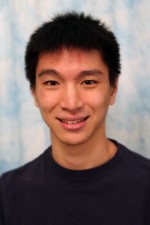
PhD Thesis Proposal
March

Carnegie Mellon University
3:00 pm to 4:00 pm
NSH 3305
Abstract:
Water ice at the lunar poles could be the most valuable resource beyond planet Earth. However, that value is not foregone, and can only be determined by rovers that evaluate the distributions of abundance, concentration, and characteristics of this ice. The near-term explorations will be solar and unlikely to endure night, and hence are limited to a single cycle of lunar daylight.
Sun-synchronous polar routes promise order-of-magnitude greater duration and range. Such routes are, however, brittle in the sense that a rover must be at precisely scheduled time and place. Methods for terrain-based localization that work at low latitudes are challenged at the lunar poles, where the grazing sunlight casts long shadows that obscure and change views over time. Moreover, the cadence of exploration driven by the clocking sun requires terrain localization to be highly informative. Technologies in these areas are lacking, which results a level of risk that currently makes these missions not viable.
The goal of this thesis is to develop methods for terrain relative navigation that enable the robust execution of sun-synchronous routes at the lunar poles. This thesis will advance terrain registration under sensor and map uncertainty, exploit shadows as features for localization, and develop planning algorithms that increase information gain from terrain registration.
There are four major accomplishments to date. The first is scan matching algorithm that probabilistically geometrically registers rover perspective stereo images to a digital elevation map. The second is an extension of the geometric method to exploit shadows as features. The third is a belief space planning algorithm that improves terrain relative localization performance along a trajectory. The fourth is a simulation framework to analyze terrain relative navigation robustness for sun-synchronous routes.
Proposed research will improve and extend the registration of shadows to other semantic features, as well as further characterize the developed terrain registration method and benchmark it to priors. In addition, planning algorithms will be developed that increase information gain from terrain registration to reduce the probability of mission failure due to localization error. These methods will be evaluated for route robustness and mission risk within the developed simulation framework and with scale field data. The work proposed for this thesis will enable robust sun-synchronous routes for multi-month exploration and science return at the lunar poles.
Thesis Committee Members:
William “Red” Whittaker, Chair
Michael Kaess
Maxim Likhachev
Uland Wong, NASA Ames Research Center